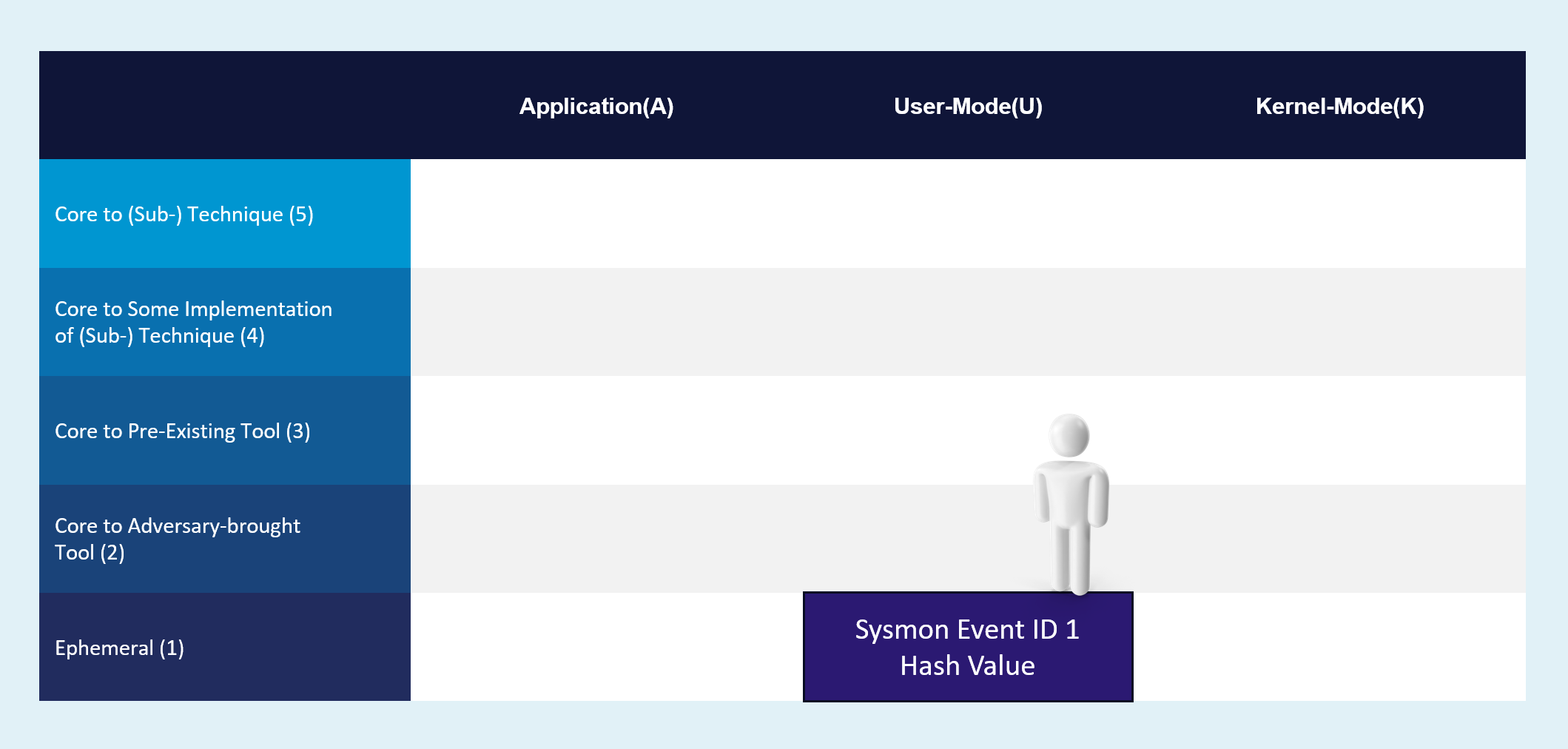Overview
The entire point of detecting indicators is to respond to them, and once you can respond to them quickly enough, you have denied the adversary the use of those indicators when they are attacking you. Not all indicators are created equal, though, and some of them are far more valuable than others.
—David Bianco, The Pyramid of Pain
Introduction
The Pyramid of Pain depicts the relationship between different categories of threat indicators and the adversary’s ability to evade detections based on those indicators. Summiting the Pyramid builds on this conceptual foundation with a rigorous analysis of how to engineer analytics to increase robustness and make adversary evasion as costly as possible.

The Summiting the Pyramid methodology is based on a two-dimensional model. The rows represent indicator categories (similar to the Pyramid of Pain), and columns represent the data sources for detection analytics. Observables can be mapped onto locations within the grid, which visually represents the difficulty and cost for adversaries to avoid creating that observable. A defender can use this model to analyze existing analytics for robustness and evadeability, as well as to engineer new and improved analytics.
For example, a defender can utilize an analytic that alerts if a certain hash is detected. An adversary can easily evade detection by recompiling their tools with a one-byte difference. This is visually represented by placing the observable on the first row:

The analytic can be improved by using observables that are in higher level groups (i.e. moving up the grid) or more reliable data sources (i.e. moving to the right). Moving up reflects the selection of indicators that are mostly costly for the adversary to change. Moving right reflects the use of data sources that are harder for the attacker to manipulate. Taken together, these lead to analytics that are more difficult and expensive to evade:
This project includes a complete toolkit for defenders to start analyzing and improving detection analytics: a model for evasiveness, a methodology for mappings detection analytics onto that model, and many worked examples of mapping real-world analytics.